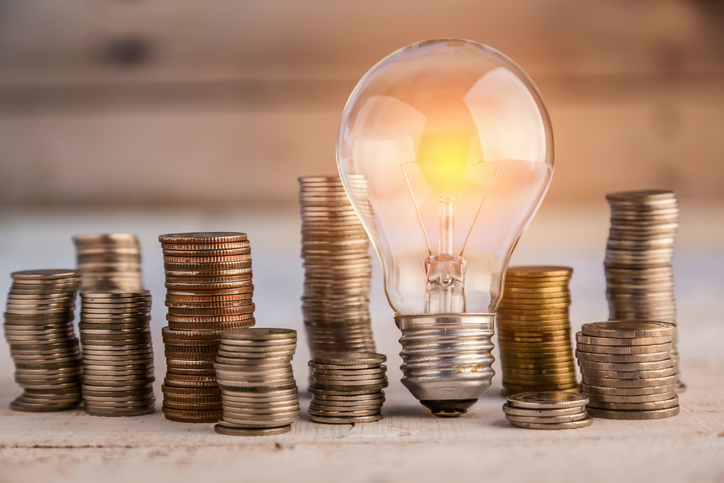Imagine the wonder when BELCO introduced electricity to Bermuda. The lit sign on its then-East Broadway premises advertising the Bermuda Electric Light, Power & Traction Company was the first intimation that 1907-life was about to change.
Wires were strung slowly as demand arose for items like fans and irons, and then increased dramatically thereafter.
Today we take for granted the energy that produces such a marvel of science. We never consider the convenience or necessity of it, except during storms when high winds or downed trees cause disruption of power. We overlook the maintenance, production, repair and delivery costs.
And energy costs escalate with every use we find for electricity and the increasingly more expensive fossil fuels that generate it. These non-renewable fuels, formed from dead animal and plant remains, and dirt, rock and heat from the earth’s core represent nature’s compost, a dinosaur-witnessed 65-million-year-old pressure cooker.
Once these fuels are exhausted, they’ll no longer exist. Even so, new uses for electricity with its associated fuel component are being discovered daily. It might be a previously unimagined plug-in device, an old washing machine someone has converted to mix rum swizzles, or some other power usage. We enjoy the benefits, without considering the costs until… the energy bill arrives at the end of the month.
And we do note that final reckoning. Perhaps we could mix drinks by hand, maybe consider turning off a device or two?
Energy use is cumulative. Every small change in consumption adds up to smaller bills. Understanding, determination and consistency are key to decreasing the cost of electricity.
Leaky faucets, for example, seem almost non-consequential. However, according to the US Department of Energy’s (DOE) Energy Saver Guide: Tips on Saving Money and Energy in Your Home, a single drip per second wastes 1,661 gallons of water a year. In Bermuda, this translates to an electric pump continually cutting in and out as water pressure drops. If you don’t immediately fix it, you waste energy, lose money and add to the wear and tear on the pumping mechanism.
Electronic plug-ins like gaming consoles, desktop computers and phone chargers, and small appliances like toasters and mixers that are left ready for use, consume energy even when turned off. That energy, although minimal, also adds up.
“Some sources estimate that up to 10 per cent of a household’s use of electricity is used by items that are turned off, but still plugged in and still drawing power,” said Jamil Rahemtula, Energy Efficiency & Conservation Manager at BELCO.
He noted that these so-called ‘phantom loads’ can account for as much as 20 per cent of the total electricity used in a home.
Unplugging appliances may not be for everyone, particularly shut-ins whose televisions and cable boxes represent a lifeline, or others whose devices are used so frequently that unplugging them is more of an inconvenience than paying a few extra dollars for the service. But if you want to lower your electricity bill, take a moment one evening to count all of the devices in which the plug-in status is evidenced by a glowing light. Now consider with which you can dispense. Unplug them.
Follow these smaller undertakings with larger efficiencies. For example, cook in a toaster oven rather than an electric oven.
“Both toaster ovens and conventional electric ovens are equally efficient in converting energy to heat, but they don’t draw the same amount of energy from the socket,” Mr. Rahemtula said.
According to the BELCO manager, a typical electric oven set at 350 degrees and using from 2,500 to 5,000 watts depending on model, age and mode will average two-kilowatt hours (kWh) of energy over 60 minutes. By comparison, a 1,200-watt toaster oven set at 450 degrees for 50 minutes will use only 0.9 kWh.
Even better savings can be realized with a 200-250 watt slow cooker. These can run for seven hours, while using only 0.7 kWh of electricity.
Whichever method you use, cover to seal in heat and reduce cooking times further.
Change to LED light bulbs. Each uses 75 per cent less electricity and lasts 10-to-20 times longer than an incandescent bulb. They’re difficult to break and don’t suddenly die, according to Mr. Rahemtula.
“Instead, they slowly reduce in power, with their maximum brightness getting lower over time,” he said.
And turning out lights when not in use will positively affect those savings you’re after.
An empty fridge requires more energy to cool. Cold foods help to cool and insulate other foods, so keep your refrigerator and freezer full and set them at 40 degrees and zero degrees Fahrenheit respectively.
Mr. Rahemtula said: “If you are hesitant about filling up your fridge in the event of a power outage, you can substitute that with filling up… containers with water and (placing) them throughout the empty spaces.”
Energy use can also be cut by closing bathroom doors when showering, cold water-washing only full loads, drying by air and using new Energy Star-certified appliances, like washers which use 25 per cent less energy and dryers which use 20 per cent less.
Until non-renewable fossil fuels have been replaced by solar, wind or other renewable, that monthly bill will continue to shock us if we don’t pay attention to decreasing our use of energy.

